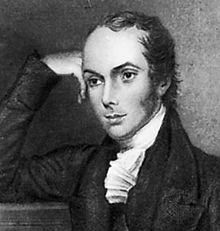 Poet and writer Thomas Pringle was born in Roxburghshire in Scotland in 1789 and counted amongst his friends Sir Walter Scott. He is perhaps most strongly linked to South African poetry after spending some years in the country and was one of the first English writers to describe the region and the people who lived there.
Poet and writer Thomas Pringle was born in Roxburghshire in Scotland in 1789 and counted amongst his friends Sir Walter Scott. He is perhaps most strongly linked to South African poetry after spending some years in the country and was one of the first English writers to describe the region and the people who lived there.
Pringle’s father was a farmer but an early accident stopped the young writer from following in his footsteps. Instead, Pringle went to the grammar school in Kelso and was academically gifted enough to earn a place at university in Edinburgh. It was during this time that he developed his writing skills and used that gift to find work on a number of journals and newspapers once he had graduated.
After Pringle began publishing some of his poems, he came to the notice of writer Sir Walter Scott who provided early encouragement and they developed a long standing friendship. Pringle was finding it difficult to forge a living as a writer and Scott convinced him to take advantage of the offer a land resettlement in South Africa.
With nothing to keep him in Scotland, the poet headed for the Baviaans River Valley where he took up a post as a journalist rather than work as a farmer. It was here that he met John Fairbairn and together the two set up a school whilst also working on two of South Africa’s newspapers. Unfortunately, the South African Journal and Advertiser were subject to censure because they were often found to be speaking out against the government.

The school also failed and left Pringle without a means of support. With no other option, he returned to England and settled in London for a while. Whilst he had been in South Africa, Pringle had written an article against slavery and this was published in England on his return. It came to the attention of the anti-slavery society and Pringle was quickly drawn into their work and made secretary.
During this time, he befriended former African slave Mary Prince and gave her the support and encouragement she needed to write and publish her story. This caused a big stir at the time but the book was a success and went through several prints. Pringle used the opportunity to publish some of his own works including a collection of poetry under the title African Sketches.

In 1834 Pringle published his most popular work in two volumes, Narrative of a Residence in South Africa. The Anti-Slavery Society became more successful and vocal with the assistance of Pringle and played a large part in parliament abolishing slavery in the British territories. Pringle himself did not get to see the passing of the law as he died in 1838 from tuberculosis at the age of just 45.
Pringle was originally buried in Bunhill Fields but his body was eventually transported back to South Africa where he was interred near his family home in the Baviaans Valley.

